Group Members:
Faculty: Mike Hildreth, Colin Jessop(contact person), Kevin Lannon Randy Ruchti, Mitch Wayne,
Research Faculty: Nancy Marinelli,Dan Karmgard
Post Doctoral Researchers: Jeff Kolb, Jason Slaunwhite
Students: Jamie Antonelli, Doug Berry,Andrew Brinkerhoff,Nathan Kellams,Sean Lynch,Robin Luo,David Morse,Tessa Pearson,Michael Planer,Nil Vals,Matthias Wolf,Anna Woodard
Engineers: Barry Baumbaugh, Arjan Heering
Technicians: Michael McKenna, Jeffrey Marchant, Mark Vigneault
The Large Hadron Collider
The large hadron collider shown below is the world's highest energy particle collider. It is located at the central European Nuclear research lab (CERN). It circulates protons around a 16 mile circumference ring that spans the border of France and Switzerland and lies 300 feet underground for radiation safety. The picture below shows the path it traces. Note lake Geneva at the top of the image and Geneva airport just beneath this which give a sense of the scale of the machine. It took nearly 15 years to design and build at a cost of $6 Billion and has been operating since 2008. The cost was shared among the govrenments of the participating institutions with the US contributing approximately $500M. Two beams of protons circulate in opposite directions and are collided at several interaction regions shown by the small circles on the ring. The energyof the beams is 8 Trillion electron-volts. It produces approxmately 10 Million collisions per second.

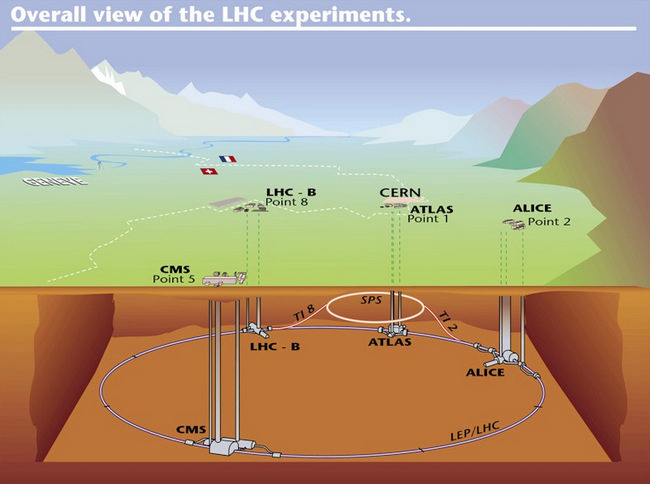
Left) The path of the Large Hadron Collider Right) The accelerator is 300 Feet undergroundwith the experiments accessed through the shafts shown
The particles in the Large Hadron Collider are accelerated by super-conducting radio frequency cavities and bent into a circle by superconducting magnets shown in the image below
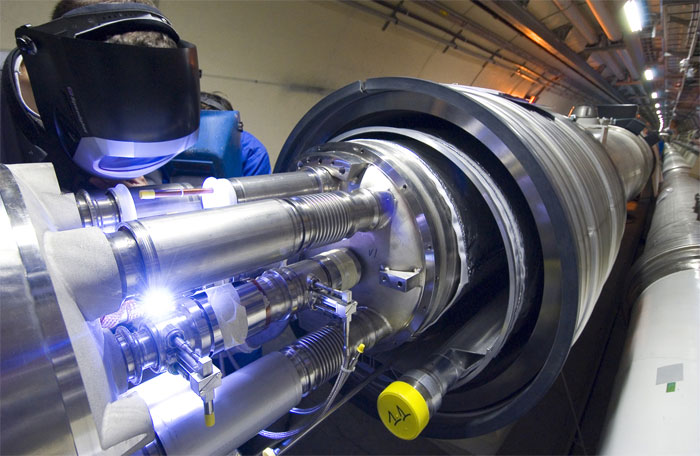

Left: The Dipole magnets which bend the high energy particles around the ring. Right: the LHC tunnel
The LHC creates collisions which replicate the conditions of the universe a fraction of a second after the Big Bang. We study these collisions to try to elucidate the physical laws and processes that have shaped
the
universe that we see 13.7 Billion years later. For this reason it has sometimes been referred to in the media as the "Big Bang Machine". More details of the Large hadron Collider can be found here
The Compact Muon Solenoid (CMS) detector at the LHC
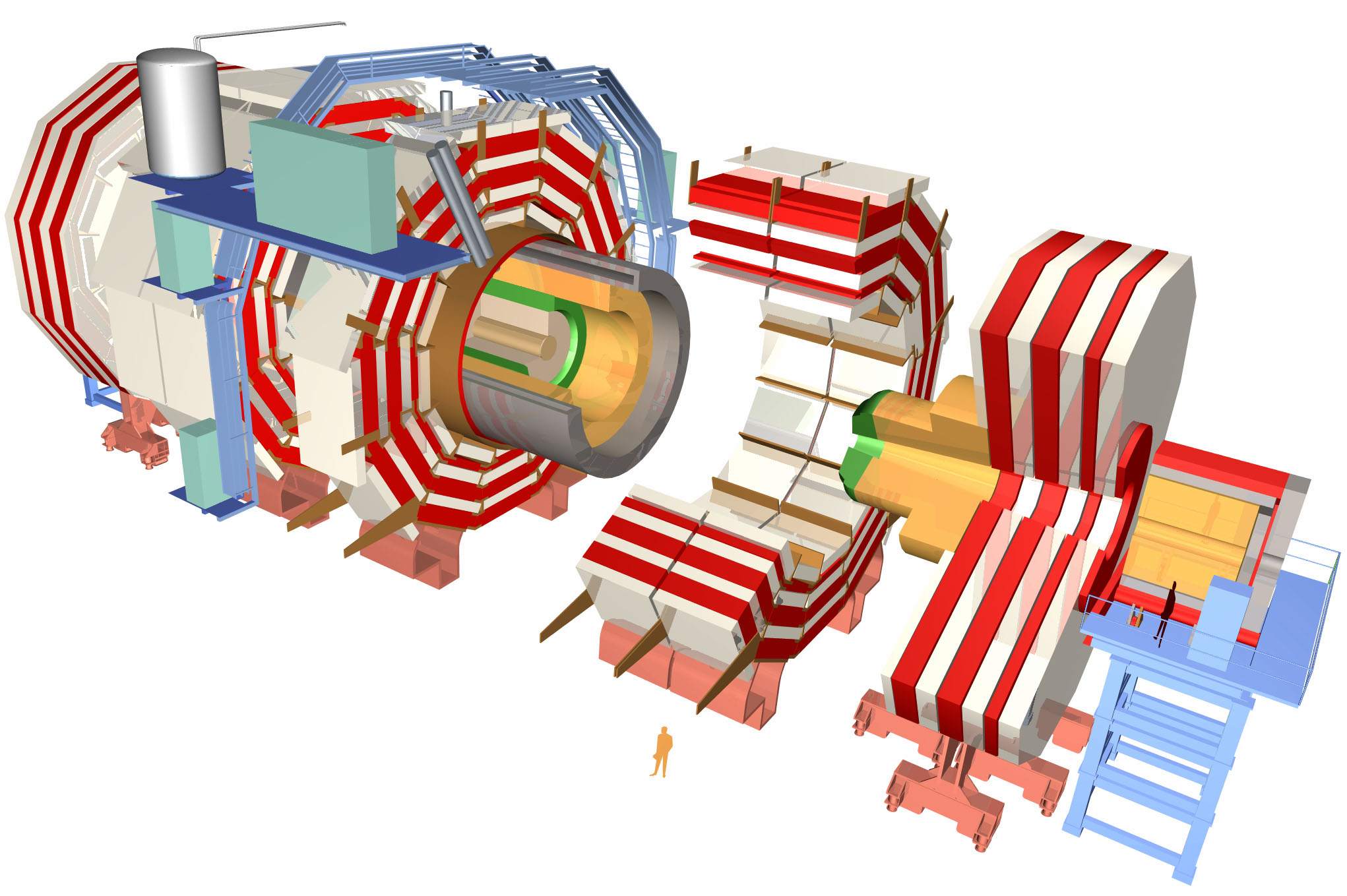
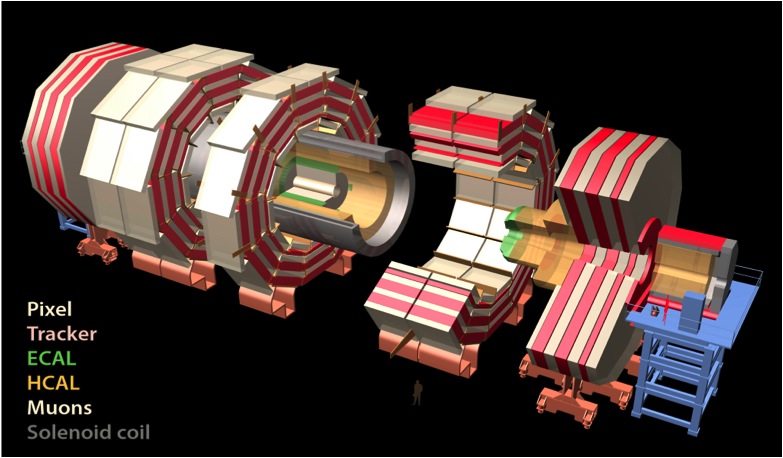
The CMS detector at the Large Hadron Collider. Note the person at the bottom of the picture.
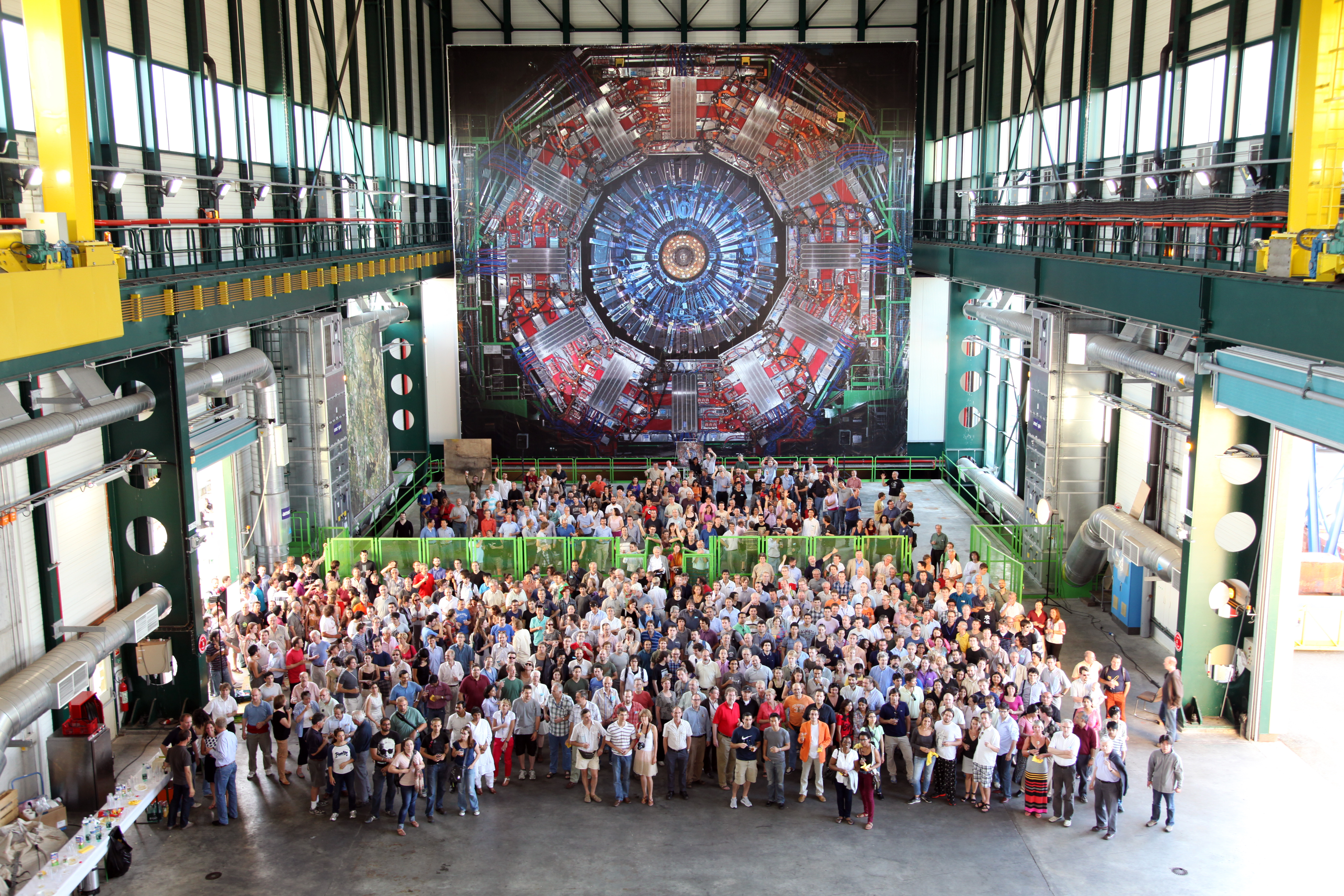
CMS physicists in front of the CMS detector.
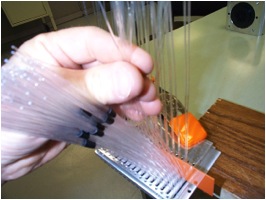
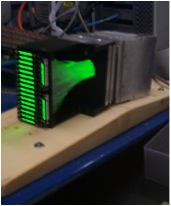
The fiber optic readout system of the CMS HCAL detector, designed and built at Notre Dame

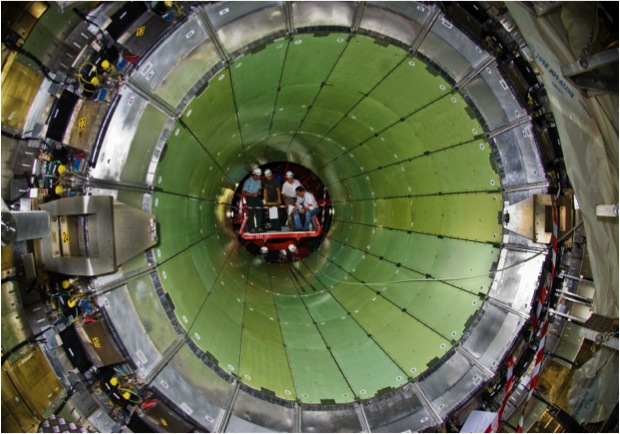
Notre Dame has made many contributions to the CMS ECAL which detects electrons and photons. It consists of tranparent lead crystals (left). They emit light when a particle enters them which is detected by the electronics attached to the crystal. Each crytsal is about a foot long. There are 76000 of them assembled into a cylindrical array. This is shown on the right during installation (The crystals are obscured by the green protective panels).
The detector collects images of the particle collisions. An example is shown below. The LHC produces about 10 million collisions per second. Only a tiny fraction of these "events" contain the signals of interesting new processes that we are looking for. Complicated electronics called a Trigger is used to discriminate in real time between the interesting and uninteresting events. Notre Dame physicists work on the trigger system. The interesting events are ercorded at a rate of about 300 per second. Often there are multiple interactions in events as shown below. More details on the CMS detector can be found here
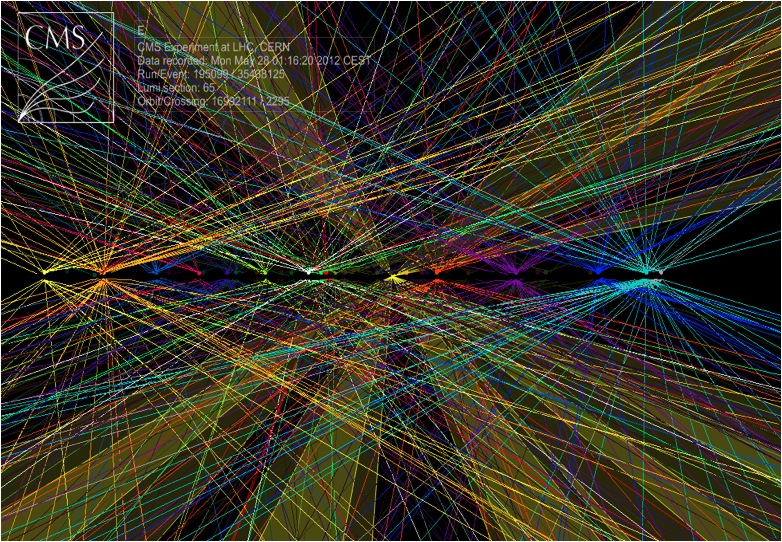
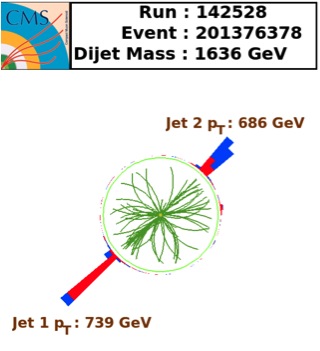
Left) A event picture with multiple collisions Right) a Dijet event in which two quarks are produced recoiling against each other
The Notre Dame CMS group
The Notre Dame group has been involved since the inception of the experiment in 1993. It now includes five members of the regular Physics Faculty (Hildreth,Jessop, Lannon, Ruchti and Wayne) who both teach classes at Notre Dame and engage in research. There are two research faculty who work in research full time, Nancy Marinelli and Dan Karmgard. Nancy is based ar CERN fulltime while Dan is at Notre Dame and organizes our outreach program described below. We have two post-doctoral researchers who spend most of their time at CERN. In addition we have 11 graduate students who each spend one to two years at CERN before returning to Notre Dame to write their dissertations. As described above we have made major contributions to the design, construction and operation of the experiment. In addition we have two engineers, Barry Baumbaugh at Notre Dame and Arjan Heering located at CERN and three technicians, Michael McKenna, Jeffrey Marchant and Mark Vigneault. However it is important to note that we are part of a larger collaboration of faculty, post-docs and students from research institutes all around the world who work closely together to make the experiment work. It is very much a team effort both at Notre Dame and with the larger community. A recent picture of some of the Notre Dame team taken in Switzerland is belo.The picture includes graduate students, undergraduate students, faculty and spouses.

The Search for the Higgs Boson
In the last 50 years we have made great progress in understanding the most fundamental interactions of particles. All matter is made of quarks and lepton. Quarks are the fundamentao building blocks of the proton and neutron. There are six types of quarks called up,down,charm,strange,bottom and top. There are also six types of leptons the electron, muon, the tau, the electron neutrino, muon neutrino and tau neutrino. They interaction with each other via the four fundamental forces, Electromagnetism (which controls the elctronics in household devices), The Weak Force which is responsible for radioactive decay, The Strong force which binds thequarks into protons and neutrons and in turn binds the protons and neutrons into the atomic nuclei and finally gravity. The Higgs Boson was proposed to solve problems that arise when in theories that try to unify the electromagnetic and weak force. Its observation means that there are really only three forces. Further the Higgs explains how the mass of particles arises. It is an energy field that exists throughout the universe. Mass is the resistance to motion that occurs if you try to accelerate any piece of matter. The Higgs field interacts with particles to create this resistence. In quantum theory particles are viewed as quantum excitations of the field so if the Higgs field exists it should be possible to create one of these particles with sufficient energy. This was originally proposed in 1963 by British theorist Peter Higgs but the mass of the Higgs itself was not predicted. Scientists have been searching for its existence for over 40 years but it has eluded discovery. It is presumed that the reason for this is that its mass is so high that we have not had sufficient energy to create it. However the LHC was build primarily to find the Higgs but also to test many other theories of particle interactions at high energies. The Higgs is produced by the interactions of the quarks and gluons (quanta of the strong force) as shown schematically in the diagrams below
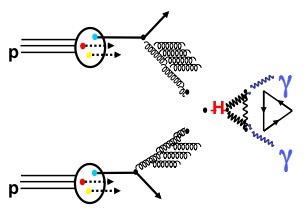
Schematic of the production of the Higgs Boson from porton collisions and its subsequent decay to two photons
The Higgs is predicted to deacy to a number of different possible particles. The Notre Dame group has been centrally involved in searching for the decay in the Higgs to two photon channel (shown above). Also in decays to tau lepton pairs and b quark pairs. The highest sensitivity is in the two photon channel. The photons are detected by the ECAL which Notre Dame helps commision and operate. In addition the HCAL, trigger and software developed by Notre Dame physicists are essential in the Higgs Search. Shown below are two images of Higgs Bosons decaying detected by the CMS detector.
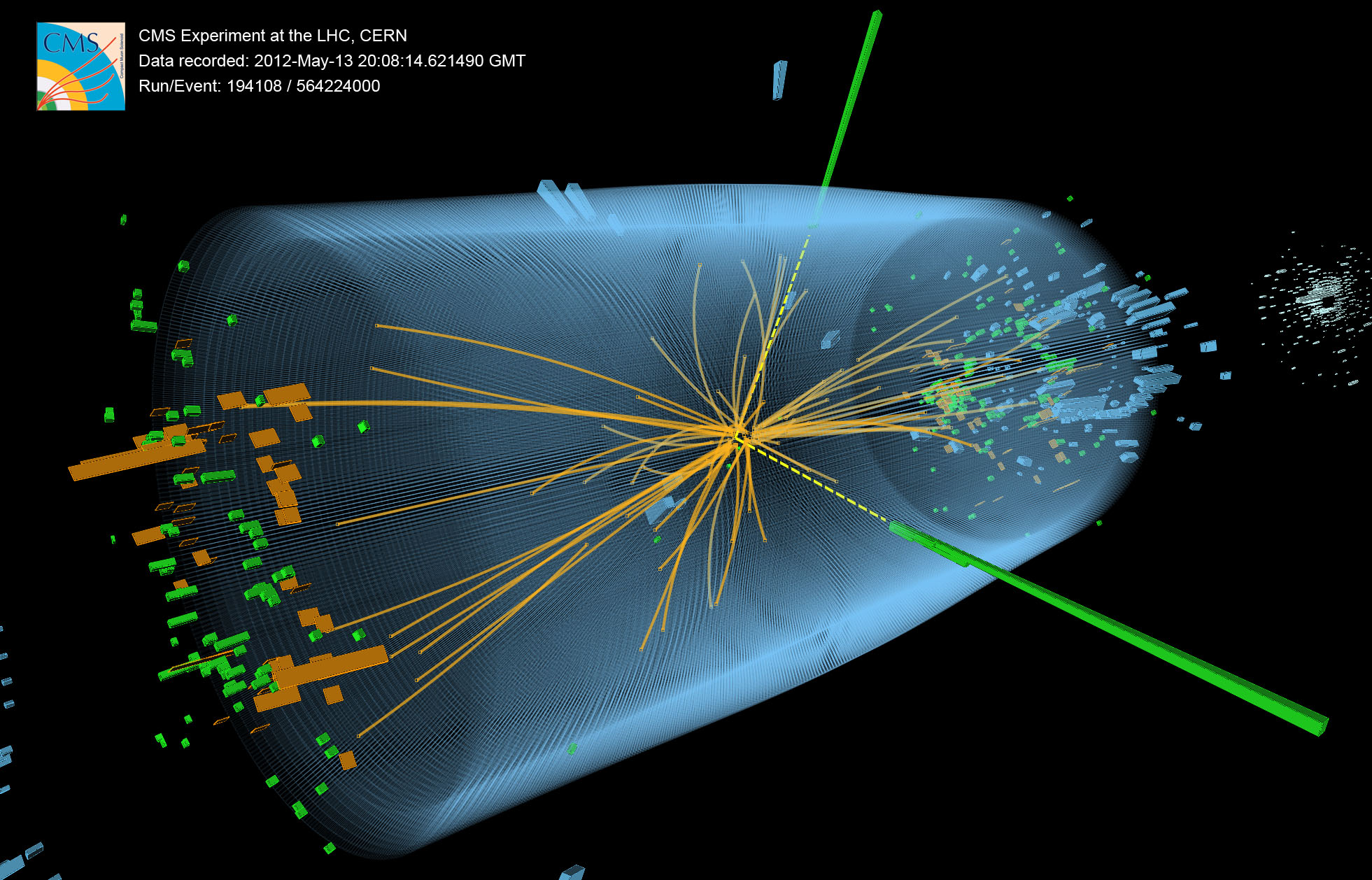
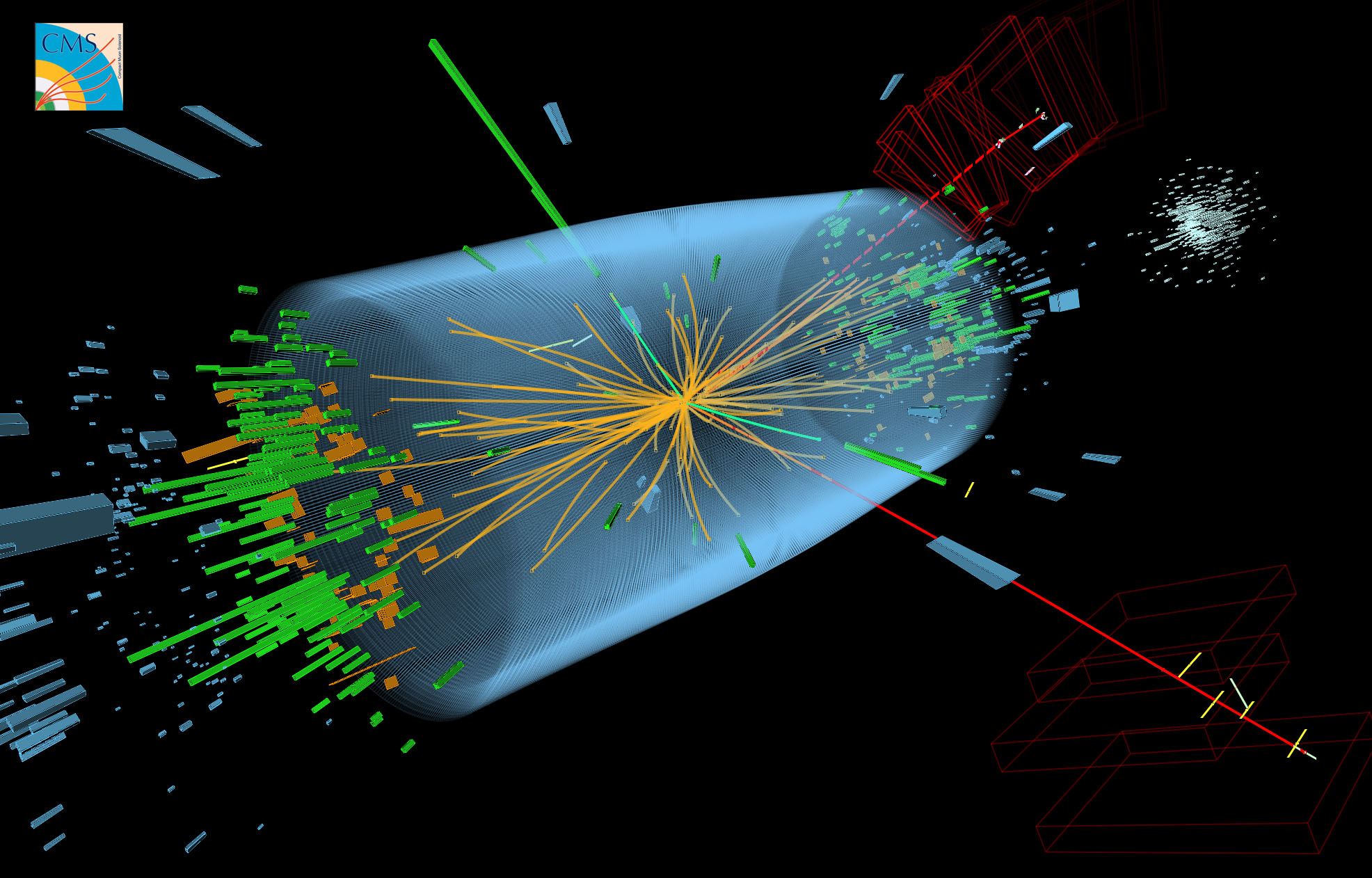
Left) A candidate event for the Higgs Boson decaying to two photons (thick green lines) detected by the CMS detector. Right a candidatefor the decay of the Higgs to ZZ which each of the Z's decaying to muons (red lines)
No one individual collision can unambiguously identify the Higgs Boson since the laws of quantum mechanics dictate that everything is probablistic and so we must see repeated events to prove that it is not other process fluctuating to look like Higgs Decays. The two plots below show show the reconstructed mass. The bumps indicate the present of the Higgs at 125 GeV


CMS and the Northern Indiana Community
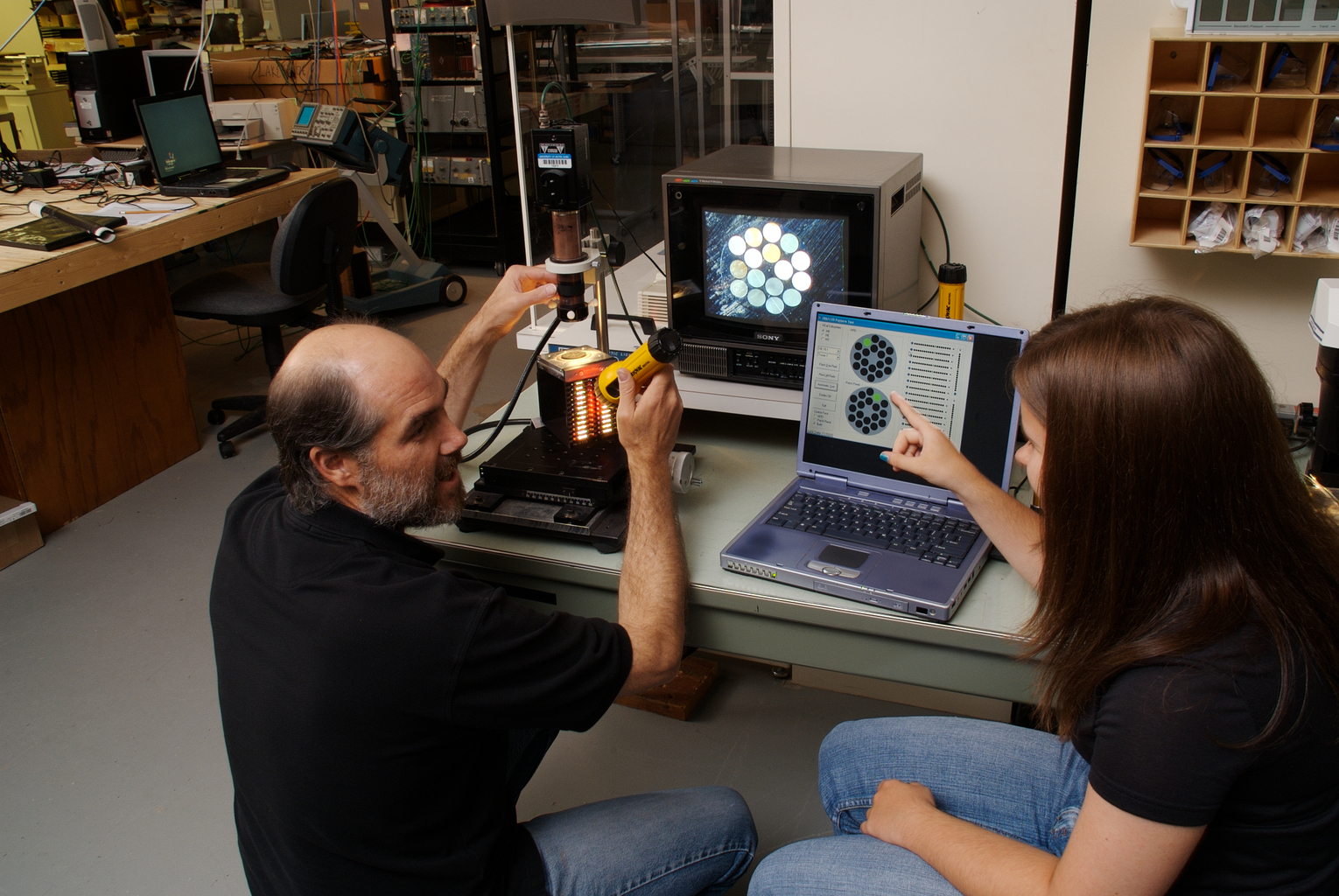
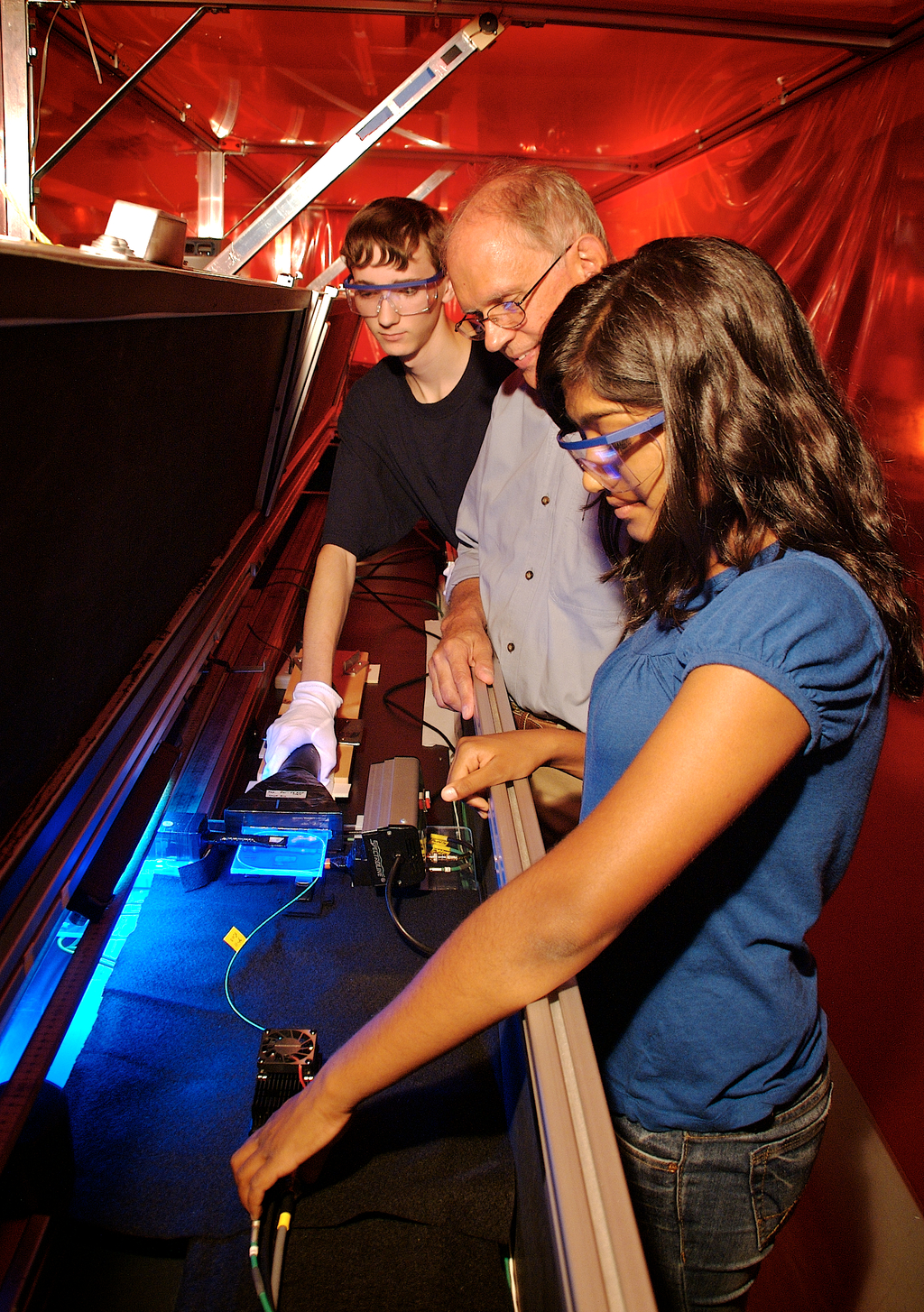
Indiana High school students working with Professor Dan Karmgard (left) and Professor Randy Ruchti (right) on the design of the CMS detector